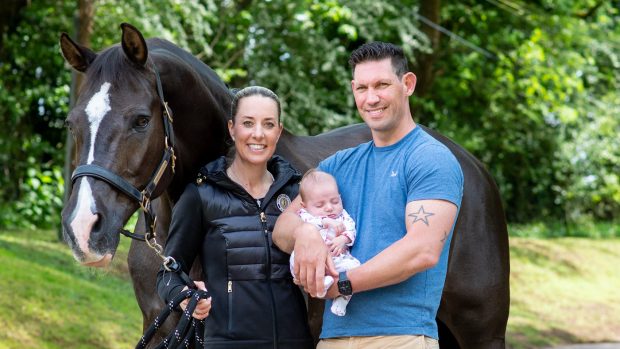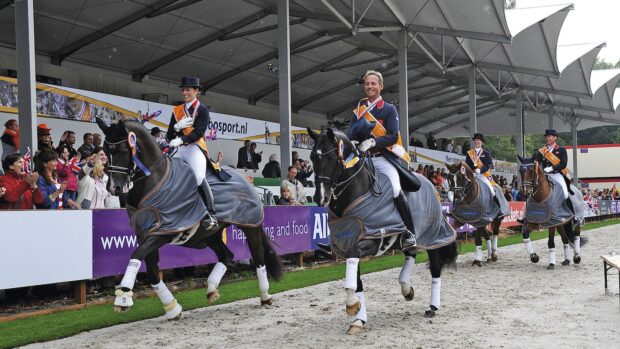To get your horse on the bit, he needs to be going in good form and moving forwards in a better outline.
Good form
This describes both the mental and physical state of your horse. Many factors influence this, but it basically comes down the mutual trust between horse and rider.
A good outline
A good outline consists of the poll as the highest point with the face vertical or just in front of the vertical. The neck should gently arch along the top line but the jaw and the muscle under the neck should be soft and relaxed. The back and loins should be supple with no tension. The shoulders should be able to move freely and all the joints of the front and back legs should flex and move equally.
On the bit
If you have both good form and outline, asking the horse to go on the bit should only involve asking for more engagement from behind, encouraging the forehand to lift and lighten.
Being on the bit starts in the hindquarters and flows forwards into the rider’s hands.
Acceptance of the bit
The horse should be encouraged to seek the rider’s rein contact by the rider taking a positive, consistent feel without being heavy or unnecessarily strong.
For your horse to accept the bit and to accept you as a rider you should be:
When things go wrong
This is where the head is held high and the angle of the face is too far in front of the perpendicular, with the back tending to hollow.
Because the head is in the air and the back is concave, the hindquarters have no other option than to trail.
Work in rising trot or walk to supple and strengthen the back. Encourage your horse to relax his jaw and flex at the poll. Generate the energy from the back end, but don’t pull the head into position. Use lots of circles, turns and schooling movements to relax and soften your horse.
This is where your horse does not accept the rein contact and tucks his nose into his chest, giving a light feeling in the hand. The face is behind the vertical and the poll is no longer the highest point.
There are several possible reasons including strong or inconsistent contact, teeth problems or the horse is just not being ridden with sufficient energy.
It sometimes happens when the horse is asked to collect with insufficient impulsion.
This is very similar to being behind the bit, but in this case the horse takes too much contact and is heavy in the hands.
Again, heavy hands may be the reason; the horse should be worked on a lighter contact and encouraged to take the hand forward.
This is where your horse pretends to go on the bit by tucking his nose into exactly the position it should be, but he is not really using himself and the power is not there. You generally need to go back to basics.
Schooling is very useful in correcting these problems, but you must first rule out pain, fear or lack of understanding as a cause.
Discount the pain aspect by checking the tack to make sure it’s not rubbing or causing discomfort as well as the mouth and back.
Physical and mental capacity
Conformation, youth and level of schooling may effect on how easily your horse finds it to go into an outline, or to engage his hocks and stretch through his top line.
Take this into account and do not ask too much from your horse too soon.


